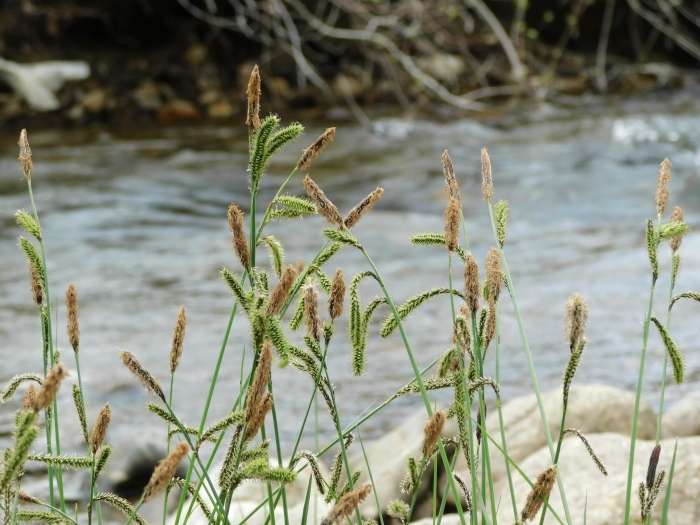Twisted Sedge
(Carex torta)
Twisted Sedge (Carex torta)
/
/

Michael J. Papay
CC BY 4.0
Image By:
Michael J. Papay
Recorded By:
Copyright:
CC BY 4.0
Copyright Notice:
Photo by: Michael J. Papay | License Type: CC BY 4.0 | License URL: http://creativecommons.org/licenses/by/4.0/ | Rights Holder: Michael J. Papay | Publisher: iNaturalist | Date Created: 2022-04-14T13:09:03-07:00 |

























Estimated Native Range
Summary
Carex torta, commonly known as Twisted Sedge, is a perennial herbaceous plant native to wetland habitats such as stream and river banks, marshes, and wet meadows in eastern Canada and the central and eastern United States. It often occupies gravelly and rocky areas, especially those that have been recently scoured by water. Twisted Sedge typically forms dense clumps or tufts and reaches heights of 10-60 cm. Its narrow, grass-like leaves twist or curl, giving the plant its common name. The greenish-brown flower spikes appear in late spring to early summer and are not particularly showy, but they do add a subtle texture to the plant’s appearance.
Twisted Sedge is valued for its ability to stabilize soil and prevent erosion in wet, disturbed sites. It is often used in riparian restoration projects and can be planted along pond edges, in rain gardens, or in naturalized areas where its robust root system can help to hold soil in place. In cultivation, it requires consistently moist to wet soil and can tolerate a range of light conditions from full sun to part shade. While generally low-maintenance, it can spread vigorously in ideal conditions and may need to be managed to prevent unwanted spread. Twisted Sedge is also used in ornamental water gardens for its textural interest and adaptability to wet conditions.CC BY-SA 4.0
Twisted Sedge is valued for its ability to stabilize soil and prevent erosion in wet, disturbed sites. It is often used in riparian restoration projects and can be planted along pond edges, in rain gardens, or in naturalized areas where its robust root system can help to hold soil in place. In cultivation, it requires consistently moist to wet soil and can tolerate a range of light conditions from full sun to part shade. While generally low-maintenance, it can spread vigorously in ideal conditions and may need to be managed to prevent unwanted spread. Twisted Sedge is also used in ornamental water gardens for its textural interest and adaptability to wet conditions.CC BY-SA 4.0
Plant Description
- Plant Type: Grass
- Height: 1-3 feet
- Width: 1-2 feet
- Growth Rate: Slow
- Flower Color: N/A
- Flowering Season: Spring, Summer
- Leaf Retention: Deciduous
Growth Requirements
- Sun: Part Shade, Full Shade
- Water: Medium
- Drainage: Fast, Medium
Common Uses
Erosion Control, Low Maintenance, Water Garden
Natural Habitat
Native to wetland habitats such as stream and river banks, marshes, and wet meadows
Other Names
Common Names: Torsion Sedge
Scientific Names: , Carex torta, Carex cespitosa var. ramosa, Carex torta var. composita, Carex torta var. staminata,
GBIF Accepted Name: